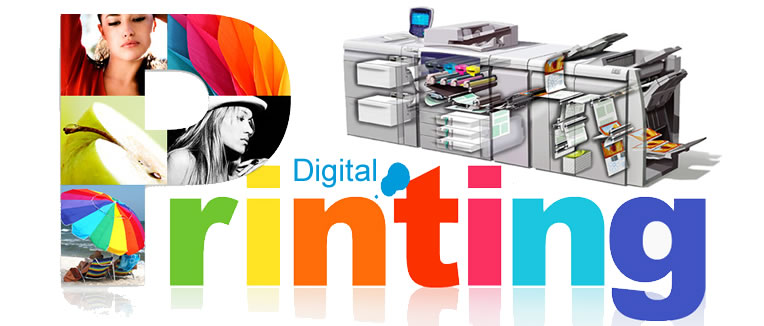Digital printing is another Chinese printing method that is completely different from traditional printing. Although today's traditional offset printing has reached a very high level in terms of printing speed and printing quality, it is efficient in information transmission, rapid market development and more and more emphasis on personalized service, further development of electronic publishing and cross-media publishing technology, most of customers who use on-demand printing will continue to increase, and the number of prints and varieties will change with market changes. Fast and flexible will become another important indicator to measure market competitiveness. The traditional printing method can no longer fully meet the ever-changing market demand. A new printing method, digital printing, was born under the new market demand. Simply put, digital printing is a new printing method that directly images electronic files on the printing medium, which is different from the cumbersome process of traditional printing.

Characteristics of digital printing:
1. Convenient and fast:
2. Flexible and efficient:
3. No minimum print quantity required:
What can digital printing bring?
In recent years, the practice of digital printing in the field of custom printing service has proved that digital printing has the following advantages:
1. The preprocessing time for making the label is short, the preparation work is less, and the delivery is timely.
2. The printing processing cycle is short, suitable for small-scale order processing (the length of the printing material is usually 200~1500 meters).
3. It has a wide range of applications, which can be used for small batch orders, and can also be used for variable information coding such as two-dimensional codes for logistics management, product traceability, marketing, etc.
4. The preparation time for start-up is short, and it does not use a large amount of overprinted paper like traditional printing, and the material cost is low.
5. The amount of raw materials is small, and the storage costs are low.
The above advantages bring higher flexibility and greater benefits to label buyers, such as relatively low prices for small batch orders, excellent quality and stable and reliable finished labels. Therefore, even if the labor price is a little higher, the label buyer is relatively easy to accept. For cheap book printing service ,using digital printing, the average profit of orders will be higher.
Can digital printing replace traditional printing?
Although digital printing has brought a lot of convenience and innovation, it is undoubtedly one of the future development trends. However, compared with traditional printing, digital printing still has some obvious shortcomings, mainly including the following:
1. In terms of printing quality, including resolution, dot size, and color space range, there are still limitations.
2. The availability of the system needs to be improved, mainly because of the high maintenance cost, additional automatic calibration and cleaning cycle system, and the overall stability is relatively poor.
3. The printing speed is relatively low, and the monochrome printing speed can also match the traditional printing machine, but the color printing cannot reach it.
4. The accuracy of overprinting is general. Overprint accuracy is very important for large-area CMYK four-color printing, and for reproducing the PANTONE color space with expanded color gamut (plus GOV).
5. The choice of printing materials is limited, such as shrink film, in-mold label material, embossed paper, etc.
6. The adhesion fastness, friction resistance, low migration characteristics, and light resistance of the ink layer are low.
7. Online production (from raw materials to finished labels in one pass) is prone to problems, and there is still a lack of valuable digital printing connection processing solutions.
With the development of digital printing technology, its application fields are also wider. More traditional book printing companies are switching to digital proofing, which greatly improves efficiency and reduces costs. In addition, digital printing can also do some traditional printing work, but in terms of the current cost structure, digital printing is only suitable for short orders of less than 200 copies printed. Of course, due to the relatively strong timeliness of digital printing, it is more suitable for handling urgent items. Digital printing is currently more inclined to serve traditional printing rather than compete.

